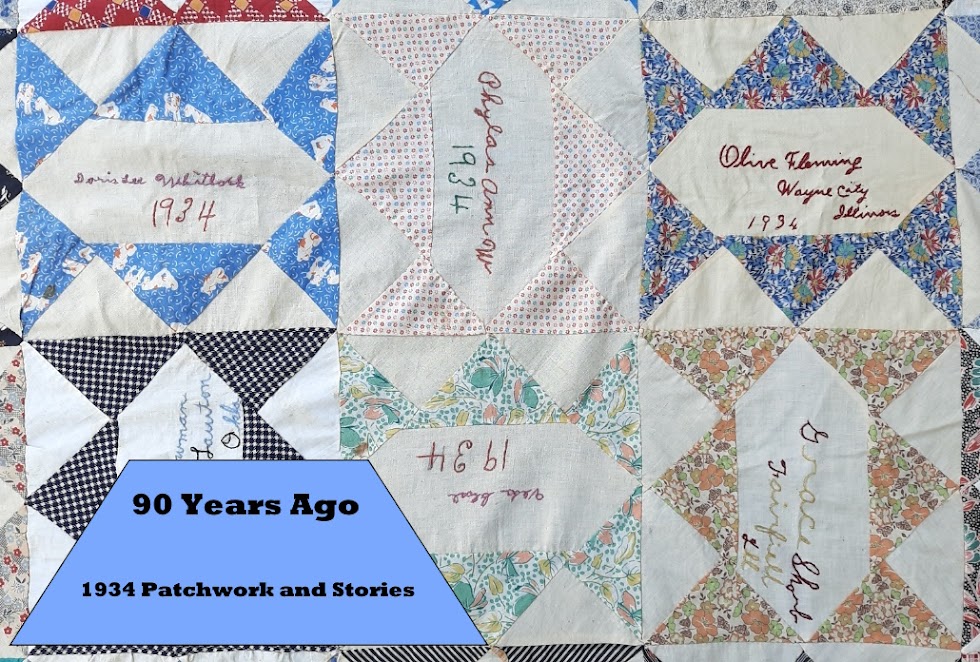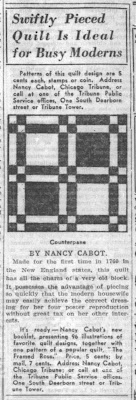It's hard to believe that the first four months of 2024 have nearly gone - a third of a year.
This week's block is Hour Glass. There are a number of different patterns called Hour Glass, but I have chosen this one from Laura Wheeler. Laura Wheeler designs were often set out on point, diamonds rather than squares.
Hour Glass, contrary to its name, is a quilt in which time plays little part, for it is done so quickly. The hour glass is formed of darker or brighter patches, and could, of course, be done in scraps if desired. As shown, it would make a very lovely quilt in three colors, with the hour glass in three shades of one color.
Pattern 673 comes to you with complete, simple instructions for cutting, sewing and finishing, together with yardage chart, diagram of quilt to help arrange the blocks for single and double bed size, and a diagram of block, which serves as a guide for placing the patches, and suggests contrasting materials.
Cincinnati Enquirer April 15, 1934






